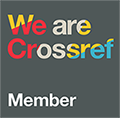The Effect of The SCAMPER Technique on Academic Achievement: A Sample of the People, Places, and Environments Learning Area
DOI:
https://doi.org/10.33308/26674874.2025393927Keywords:
SCAMPER Technique, Social Studies, People, Places and EnvironmentsAbstract
This study aims to examine the effect of processing the “People, Places, and Environments” learning area within the scope of the 6th grade social studies course using the SCAMPER technique on students’ academic achievement and their opinions about this technique. This research, which was designed based on a mixed-methods approach, was conducted in two branches at the 6th grade level. A total of 42 students, 21 in each branch, participated in the study. The multiple-choice achievement test developed during the research process was used as a pretest, posttest, and retention test. The obtained data were evaluated using t-tests and ANOVA. After the posttest, the researcher conducted semi-structured interviews with the students in the experimental group, and the qualitative data obtained were analyzed using the content analysis method. As a result, a significant increase in the students’ academic achievement was observed in the experimental group where the SCAMPER technique was used. Students stated that the SCAMPER technique helped them understand the course outcomes more easily, improved their creativity, and made the process more enjoyable. In addition, most students wanted this technique to be used in Turkish lessons and requested more technological material support in the courses to be taught using the SCAMPER technique.
Downloads
References
Al-Jarrah, A. A., & Al Tarawneh, M. A. F. (2021). The impact of SCAMPER and Baron's techniques on the development of English language critical thinking skills: Applied study on 10th grade students. Dirasat: Educational Sciences, 48(3), 437-445.
Aydın, İ., & Çilci, N. (2020). SCAMPER (yönlendirilmiş beyin fırtınası) tekniğinin 5. ve 6. sınıf öğrencilerinin yaratıcı yazıları üzerindeki etkisi. Iğdır Üniversitesi Sosyal Bilimler Dergisi, 21, 223-261.
Baş, Ş. (2018). Sanatsal yaratım sürecinde SCAMPER tekniğinin kullanılması [Yayımlanmamış doktora tezi]. Ondokuz Mayıs Üniversitesi.
Baş, Ş., & Kaptan, A. Y. (2021). Sanatsal yaratım sürecinde SCAMPER tekniğinin kullanılması. Cumhuriyet International Journal of Education, 10(3), 1126-1149. DOI: https://doi.org/10.30703/cije.816188
Bilgin, İ., & Toksoy, A. (2014). Yaparak yaşayarak öğrenme etkinliklerinin öğrencilerin bilimsel süreç becerilerine etkisi. Sakarya Üniversitesi Eğitim Fakültesi Dergisi, 13, 163-169.
Buser, J. K., Buser, T. J., Gladding, S. T., & Wilkerson, J. (2011). The creative counselor: Using the SCAMPER model in counselor training. Journal of Creativity in Mental Health, 6(4), 256-273. DOI: https://doi.org/10.1080/15401383.2011.631468
Büyüköztürk, Ş. (2021). Sosyal bilimler için veri analizi el kitabı (29. Baskı). Pegem Akademi.
Cohen, J. (1988). Statistical power analysis for the behavioral sciences (2nd ed.). Lawrence Erlbaum Associates.
Eberle, B. (1996). SCAMPER on: Games for imagination development. Prufrock Press.
Eberle, R. F. (1971). SCAMPER: Games for imagination development. D.O.K. Publishers.
Fakhry Tharwa, F. F. (2019). Using the SCAMPER model to develop translation skills for major students in the faculty of education, Majmaah University, Saudi Arabia. AWEJ for Translation & Literary Studies, 3(2), 91-113. DOI: https://doi.org/10.24093/awejtls/vol3no2.9
Fosnot, C. T. (1996). Constructivism: A psychological theory of learning. In C. T. Fosnot (Ed.), Constructivism: Theory, perspectives, and practice (pp. 8-34). Teachers College Press.
Fraenkel, J. R., Wallen, N. E., & Hyun, H. H. (2012). How to design and evaluate research in education (8th ed.). McGraw-Hill.
Gladding, S. T. (2011). Using creativity and the creative arts in counseling: An international approach. Turkish Psychological Counseling and Guidance Journal, 4(35), 1-7.
Gladding, S. T., & Henderson, D. A. (2000). Creativity and family counseling: The SCAMPER model as a template for promoting creative processes. The Family Journal, 8(3), 245-249. DOI: https://doi.org/10.1177/1066480700083005
Glenn, R. E. (1997). SCAMPER for student creativity. Education Digest, 62(6), 67-69.
Gündoğan, A. (2019). SCAMPER: Improving creative imagination of young children. Creativity Studies, 12(2), 315–326. DOI: https://doi.org/10.3846/cs.2019.11201
İslim, O. F. (2009). Bilgi ve iletişim teknolojileri dersinin SCAMPER (Yönlendirilmiş beyin fırtınası) tekniğine göre işlenmesinin öğrencilerin yaratıcı problem çözme becerilerine ve akademik başarılarına etkisi [Yayımlanmamış yüksek lisans tezi]. Gazi Üniversitesi.
Johnson, R. B., & Onwuegbuzie, A. J. (2004). Mixed methods research: A research paradigm whose time has come. Educational Researcher, 33(7), 14-26. DOI: https://doi.org/10.3102/0013189X033007014
Karataş, S., & Su Tonga, E. (2016). SCAMPER (Yönlendirilmiş Beyin Fırtınası) tekniğinin kullanımına yönelik öğretmen adaylarının görüşleri. Eğitim ve Öğretim Araştırmaları Dergisi, 5(4), 329-339.
Karpicke, J. D., & Blunt, J. R. (2011). Retrieval practice produces more learning than elaborate studying with concept mapping. Science, 331(6018), 772–775. DOI: https://doi.org/10.1126/science.1199327
Kaytez, N. (2015). Beş yaş çocuklarının yaratıcılıklarına SCAMPER eğitim programının etkisinin incelenmesi [Yayımlanmamış doktora tezi]. Gazi Üniversitesi.
Kılıçoğlu, G. (2015). Sosyal bilgiler öğretimi. M. Safran (Ed.), Sosyal bilgiler: Tanımı, dünyada ve ülkemizde gelişimi ve önemi (s. 3-16). Pegem Akademi.
Kocatepe, O. (2017). Ortaokul 6. sınıf fen bilimleri dersi bitki ve hayvanlarda üreme, büyüme ve gelişme konusunda SCAMPER tekniğinin akademik başarıya etkisi [Yayımlanmamış yüksek lisans tezi]. Ağrı İbrahim Çeçen Üniversitesi.
Kvale, S., & Brinkmann, S. (2009). Interviews: Learning the craft of qualitative research interviewing (2nd ed.). Sage Publications.
MEB. (2018). Sosyal bilgiler dersi öğretim programı (İlkokul ve Ortaokul 4, 5, 6 ve 7. Sınıflar. https://mufredat.meb.gov.tr/Dosyalar/201812103847686-SOSYAL%20B%C4%B0LG%C4%B0LER%20%C3%96%C4%9ERET%C4%B0M%20PROGRAMI%20.pdf
MEB. (2023). Sosyal Bilgiler dersi öğretim programı (Ortaokul 5, 6 ve 7. sınıflar). https://mufredat.meb.gov.tr/Dosyalar/2023428142532575-2023_sosyal_bilgiler.pdf
MEB. (2024). Türkiye Yüzyılı Maarif Modeli öğretim programları ortak metni. https://tymm.meb.gov.tr/upload/brosur/2024programortakmetinOnayli.pdf
Özgen, K., & Alkan, H. (2012). Yapılandırmacı öğrenme ortamında öğrenme stillerine uygun geliştirilen etkinliklere yönelik öğrenci görüşlerinin incelenmesi. Dicle Üniversitesi Ziya Gökalp Eğitim Fakültesi Dergisi, 18, 239-258.
Özyaprak, M. (2016). Yaratıcı düşünme eğitimi: SCAMPER örneği. Üstün Zekâlılar Eğitimi ve Yaratıcılık Dergisi, 3(1), 67–81.
Özyaprak, M., & Leana-Taşcılar, M. Z. (2019). The effectiveness of self-regulated learning on teaching SCAMPER technique of creativity. Turkish Journal of Giftedness and Education, 9(1), 16-31.
Serrat, O. (2009). The SCAMPER technique. Asian Development Bank. http://digitalcommons.ilr.cornell.edu/intl/192
Tabachnick, B. G., & Fidell, L. S. (2013). Using multivariate statistics (6th ed.). Pearson.
Tezci, E., & Köksalan, B. (2007). Yapılandırmacı eğitim ve öğretim yaklaşımları. Fırat Üniversitesi Doğu Araştırmaları Dergisi, 5(2), 73-78.
Toraman, S., & Altun, S. (2013). Application of the six thinking hats and SCAMPER techniques on the 7th-grade course unit “Human and Environment”: An exemplary case study. Mevlâna International Journal of Education (MIJE), 3(4), 166-185. DOI: https://doi.org/10.13054/mije.13.62.3.4
Tsai, L. L. (2019). New SCAMPERS: Reclassifying and redefining thinking skills. International Journal of Innovation and Economic Development, 7(1), 136-146. DOI: https://doi.org/10.31686/ijier.vol7.iss1.1292
Yağcı, E. (2012). Yönlendirilmiş beyin fırtınası tekniği: SCAMPER konusunda veli görüşleri üzerine bir çalışma. Hacettepe Üniversitesi Eğitim Fakültesi Dergisi, 43, 485-494.
Yıldız, B., & İsrael, M. (2002). Yaratıcılığı geliştirmede bir yol: SCAMPER. Yaşadıkça Eğitim Dergisi, (74-75), 53-59.
Downloads
Published
How to Cite
Issue
Section
License
Copyright (c) 2025 Erol Şahin- Mürşet Çakmak

This work is licensed under a Creative Commons Attribution-NonCommercial-NoDerivatives 4.0 International License.
I accept that the Owner of Journal of Education for Life, the Editor, Associate Editors, Reviewers and the Editorial Board cannot be hold responsible regarding the scope, the findings, the discussion and conclusion of the manuscript submitted.
I declare to the editorship of Journal of Education for Life that the manuscript is original and has not been published anywhere else or is not under evaluation process for any other journal.
I approve that I grant Journal of Education for Life as the sole and exclusive right and license to publish for the full legal term of copyright of my manuscript concurring with article 5846 / 22-23-25 while I retain copyright in the work.





